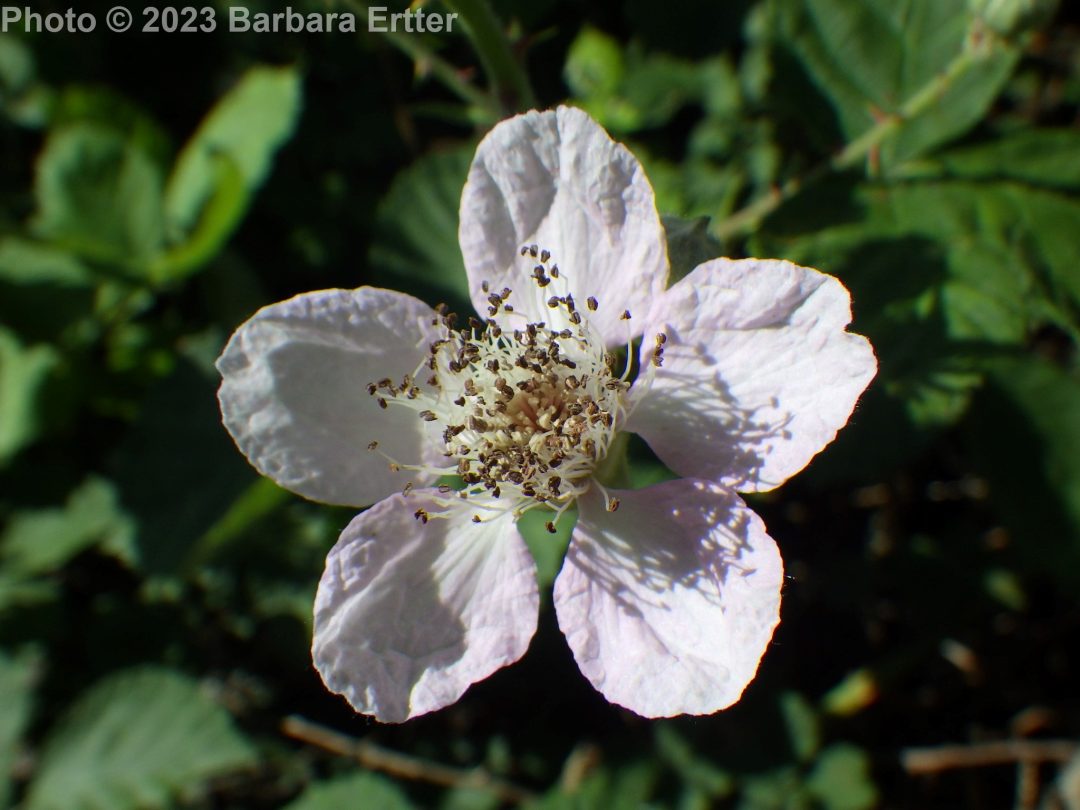Nailing down the correct Latin name for the well-known, widely established Himalayan Blackberry is a taxonomic can of worms. For a start, the genus as a whole is a nomenclatural nightmare, with anywhere from 250 to 700 (or more) species depending on the taxonomic philosophy of your source. This is in part because the genus is notoriously apomictic, meaning that sexual recombination is frequently bypassed; as a result, a plethora of asexually reproducing “microspecies” readily develop that can each be given its own name (especially in Europe). Knowing which microspecies is which is relatively straightforward if you know exactly where it natturally occurs; without this context, identification can be a challenge. And as happens, we don’t know exactly where Luther Burbank got the seeds that he used to breed the Himalayan blackberry, or even if more than one species (or microspecies) might have been involved (see The Strange, Twisted Story Behind Seattle’s Blackberries). One thing we do know is that it has nothing to do with the Himalayan Mountains, other than as a marketing tactic by Burbank.
The current use of Rubus bifrons as the Latin name follows the treatment in Flora of North America North of Mexico (Alice et al. 2014), which was also adopted by the recently updated Flora of the Pacific Northwest. This use depends on the interpretation that R. bifrons and R. armeniacus are not taxonomically distinct; otherwise the latter would be the correct name. In older references, the species was commonly referred to as R. discolor or R. procerus.










